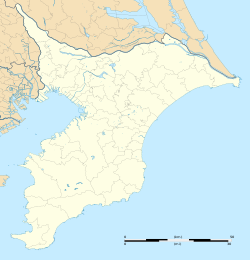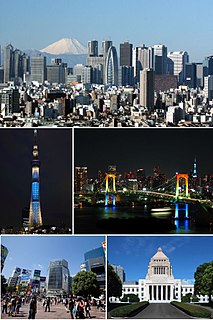
Funabashi is a city located in Chiba Prefecture, Japan. As of February 2016, the city had an estimated population of 623,679, and a population density of 7,280 persons per km². The total area is 85.62 square kilometres (33.06 sq mi).

The Shin-Keisei Electric Railway is a private railway in Chiba Prefecture, Japan. It connects Narashino and Matsudo. It is a subsidiary of Keisei Electric Railway.
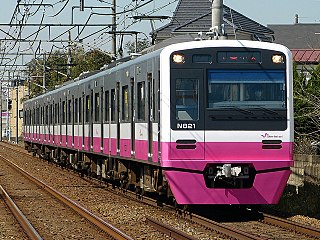
The Shin-Keisei Line is a railway line in Japan owned by the private railway company Shin-Keisei Electric Railway, a subsidiary of Keisei Electric Railway. The line runs between Matsudo Station in Matsudo, Chiba, and Keisei-Tsudanuma Station in Narashino, Chiba.

Yatsu Station is a railway station operated by Keisei Electric Railway's Keisei Main Line located in Narashino, Chiba Prefecture Japan. It is 28.4 kilometers from the terminus of the Keisei Main Line at Keisei-Ueno Station.

Nishi-Funabashi Station is a railway station in Funabashi, Chiba, Japan, operated by East Japan Railway Company, Tokyo Metro, and the Tōyō Rapid Railway. It is the eastern-most station of the Tokyo subway network, lying in Chiba Prefecture.

Kita-Narashino Station is a railway station located in Funabashi, Chiba Prefecture Japan. It is a junction station for the Shin-Keisei Electric Railway's Shin-Keisei Line and the Tōyō Rapid Railway’s Tōyō Rapid Railway Line. It is 21.0 kilometers from the terminus of the Shin-Keisei Line at Matsudo Station and is 8.1 kilometers from the terminus of the Tōyō Rapid Railway Line at Nishi-Funabashi Station.

Narashino Station is a railway station operated by Shin-Keisei Electric Railway's Shin-Keisei Line located in Funabashi, Chiba Prefecture Japan. It is 21.7 kilometers from the terminus of the Shin-Keisei Line at Matsudo Station.
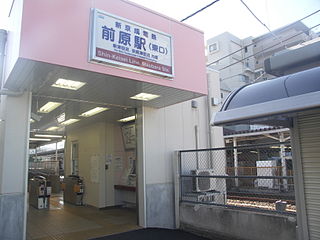
Maebara Station is a railway station operated by Shin-Keisei Electric Railway's Shin-Keisei Line located in Funabashi, Chiba Prefecture Japan. It is 23.9 kilometers from the terminus of the Shin-Keisei Line at Matsudo Station.
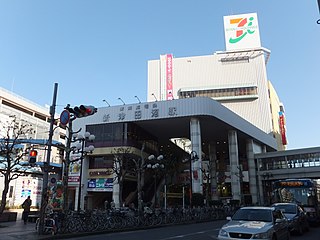
Shin-Tsudanuma Station is a railway station on the Shin-Keisei Line in Narashino, Chiba, Japan, operated by Shin-Keisei Electric Railway.

Shin-Narashino Station is a railway station on the Keiyō Line in Narashino, Chiba, Japan, operated by the East Japan Railway Company.
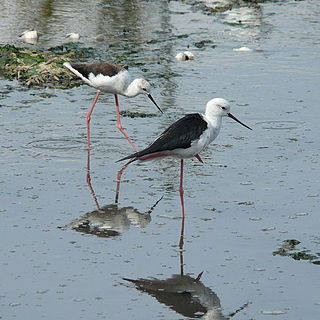
Yatsu-higata (谷津干潟) is a tidal flat in Narashino, Chiba Prefecture, Japan, 2 km from Tokyo Bay. Once a part of the largest tidal flats in Japan, much of the area has been reclaimed. Forty hectares of wetland were designated a Ramsar Site in 1993.

Makuharihongo is a district of Hanamigawa Ward, Chiba City, Chiba Prefecture, Japan, consisting of 1-chōme to 7-chōme.

Makuharicho is a district of Hanamigawa Ward, Chiba City, Chiba Prefecture, Japan, consisting of 1-chōme to 6-chōme.

Kemigawacho is a district of Hanamigawa Ward, Chiba City, Chiba Prefecture, Japan, consisting of 1-chōme to 3-chōme, and 5-chōme.
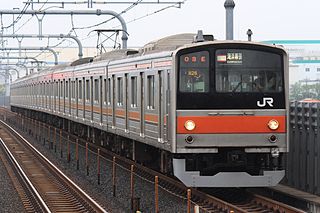
The Shimōsa (しもうさ) is an all-stations train service in Japan operated by the East Japan Railway Company between Kaihimmakuhari in Chiba Prefecture and Ōmiya in Saitama Prefecture.

Okubo is a district of Narashino City, Chiba Prefecture, Japan, consisting of 1-chōme to 4-chōme. The name “Okubo” is also used to refer to the area around Keisei Ōkubo Station.

Mimomi (実籾) is a district of Narashino City, Chiba Prefecture, Japan, consisting of 1-chōme to 6-chōme and Hongo.




